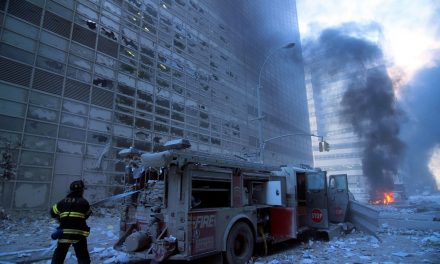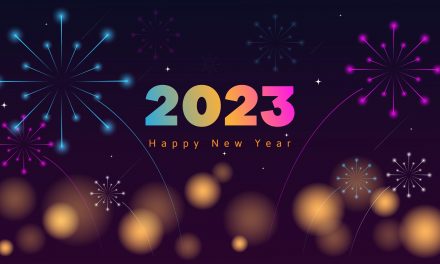(Photo Credits: Steve Petteway, Collection of the Supreme Court of the United States / Public domain)
Fight for the things that you care about. But do it in a way that will lead others to join you.
– Ruth Bader Ginsburg said when she was asked about what advice she would give to the younger women of today during her acceptance speech as Harvard University’s Radcliffe Medal recipient in 2015.
Ruth Bader Ginsburg, fondly called as the Notorious RBG, had spent most of her life fighting for the rights of the marginalized—mostly that of the women and the LGBT community. RBG is famously quoted as saying, “I don’t say women’s rights—I say the constitutional principle of the equal citizenship stature of men and women.”
And work hard she did, in order to attain equality for everyone, having experienced many opportunities close their doors on her early on in her life just because of her gender.
Statement from President Obama on the passing of Justice Ginsburg https://t.co/Fj3Y95S20h
— Yashar Ali 🐘 (@yashar) September 19, 2020
It was the many experiences that made her aware of inequality. It was, for instance, being asked by her dean while attending Harvard Law School “why she was taking up a place that ‘should go to a man.'” This happened in 1956 when she was only one out of nine women in a class of 552—it just goes to show how far things had changed since then.
In another instance, it was being refused entry at a library in Harvard because women were not allowed inside, RBG related, “There was nothing I could do to open the door guarded by a university employee who said, ‘You can’t enter that room.'”
She was also not afforded an interview for a Supreme Court clerkship, even though she came recommended and she graduated at the top of her law school class in Columbia where she transferred from Harvard.
President @BarackObama on the passing of Supreme Court Justice #RuthBaderGinsburg. #AMJoy pic.twitter.com/XO3UVdFlGx
— AM Joy on MSNBC (@amjoyshow) September 19, 2020
Clearly, the odds had always been against her even way back then, but Ruth Bader Ginsburg persevered.
She paved the way and opened the doors for so many and she managed to do this amidst five bouts with cancer. For the past two decades, she fought colon cancer (1999), pancreatic cancer (2009), lung cancer (2018, when “two cancerous growths were removed from her lungs which was discovered by chance after she fell and broke several ribs”), pancreatic cancer (again, in 2019), and liver lesions (2020).
NPR wrote a detailed account of her life as well as an extensive list of her accomplishments which you can read here. But what she did for the LGBT community alone was immeasurable.
Many people have come to the Supreme Court to honor #RuthBaderGinsburg #RIPRBG @fox5dc pic.twitter.com/zj26FuckvO
— Nick Petrillo (@nicknewsdc) September 20, 2020
Very recently, she voted for the protection of the LGBTQ workers against discrimination because of their sexual orientation or gender identity (Bostock v. Clayton County). In addition, “Justice Ginsburg joined Justice Kennedy’s majority decisions in many landmark cases in LGBTQ civil rights history, including Romer v. Evans in 1996, Lawrence v. Texas in 2003, Windsor v. U.S. in 2013, and Obergefell v. Hodges in 2015,” according to Human Rights Campaign (HRC).
In Romer v. Evans, an amendment to the Colorado state constitution that prohibited laws protecting the rights of the LGBT community was declared invalid. According to Britannica, it was “the first case in which the court declared that discrimination on the basis of sexual orientation violated constitutionally protected rights.”
Once upon a time, it was a crime for two consenting adults of the same sex to engage in a “certain intimate sexual conduct” because it “violates the Due Process Clause.” Lawrence v. Texaschanged that, the landmark decision stated that criminalizing gay sex was unconstitutional thereby also invalidating the sodomy laws in a dozen other states.
On June 26, 2013 in Windsor v. U.S., the U.S. Supreme Court “ruled that section three of the so-called “Defense of Marriage Act” (DOMA) is unconstitutional and that the federal government cannot discriminate against married lesbian and gay couples for the purposes of determining federal benefits and protections.”
Windsor v. U.S. was a very interesting case because “for the first time, a State Supreme Court had ruled that gay couples might have the right to marry.” It’s a case where a spouse was taxed for her inheritance from her deceased wife “as though they were strangers” because the “federal government refused to recognize their marriage.” You can read Windsor v. U.S. in detail here.
On the other hand, the Obergefell v. Hodgesis a 5-4 majority landmark rulingwhere the U.S. Supreme Court declared on 26 June 2015that “the U.S. Constitution protects same-sex couples’ freedom to marry in all 50 states, the District of Columbia and the U.S. territories.”
Did you know that Justice Ginsburg officiated many same-sex weddings? And not only was she the first Supreme Court justice to do so, she also officiated one even before same-sex marriages became legal.
***
Justice Ruth Bader Ginsburg passed away this Friday at her home in Washington, D.C. due to the complications from metastatic pancreatic cancer. She was 87 years old.
Justice Ginsburg was appointed to the United States Supreme Court by President Bill Clinton in 1993 making her the “second woman to serve on the U.S. Supreme Court, after Sandra Day O’Connor.”
Ruth Bader Ginsburg served for more than 27 years as an Associate Justice of the Supreme Court of the United States. During that time, RBG worked tirelessly to “be a leading voice for gender equality, women’s interests, and civil rights and liberties.”
RBG’s final wish, conveyed through her granddaughter, Clara Spera, said: “My most fervent wish is that I will not be replaced until a new president is installed.”
Thank you, Justice Ruth Bader Ginsburg, for everything that you had done for the LGBT community. May you Rest in Peace.
We’ll leave you guys with some of the most touching tributes for RBG that we’ve read online, please feel free to leave yours in the comments section:
Remember when you could disagree with someone and treat them with respect and even be their friend? We can still do it. #RuthBaderGinsburg pic.twitter.com/4wgKV7XFrD
— James Martin, SJ (@JamesMartinSJ) September 19, 2020
Well this brought tears. I have been long fascinated by the “Marty and Ruth” love story. So important. “Choose wisely” I tell ambitious young women and men about their partners. #RuthBaderGinsburg https://t.co/KpeCI2M23S
— Sherrilyn Ifill (@Sifill_LDF) September 19, 2020
Foley Square is lit up for #RBGRIP. pic.twitter.com/wnwI0Nmzea
— Justin Hendrix (@justinhendrix) September 20, 2020










Let us be honest with her final wish, in it she was a hypocrite, just like all career politicians. She had previously said when there was a democratic president ““I would like to see the court have a full house by the time this term ends” regarding Garland. Lucky in our country dying wishes have no legal weight, just feels. Keep that in mind as you bash McConnell for having a different view depending on who was in “power.”
Champion of the GOP is more like it. If she had retired in 2012 the Court would have been still with a leftist slant. Hubris breed nemesis, and few things have the egotism of a feminist
You don’t know that remember republicans can hold up things. We can add more but needed the members in the house must get to vote out in the senate. Please each governor, mayors, school board, etc. In every position you must vote.
Justice Ginsburg was a one of a kind. A Justice all should be proud of. For that reason, I was horrified this morning to see Democratic leadership on the news brandishing a full-sized poster of her with the supposed quote of RBG’s final wish conveyed through her granddaughter emblazoned across her chest. First, the woman is not even in her grave and the Democrats are using her to further their agenda. Without permission. Trump, showing caring, has said he won’t do anything until after her funeral. Second, the Justice would be very prompt to point out in court that “RBG’s… Read more »
Hunter I agree with you about the hypocrisy. It’s not suppose to be like that..The political climate right now is out-right embarrassing and both sides are to blame… I been saying all along, i wish I had a Democratic presidential candidate that I could feel good about voting for so I feel you. I hesitantly voted Democrat in 2016 and didn’t feel good about it….Sadly, we’re in for a nasty fight as we morn RBG.
We have lost a great warrior in justice Ginsburg…may we honor he legacy by fighting even hard for our rights and the right of others. Even those who mean ill will against. As an ex airman who served for freedom of all mankind…
So sad about her passing. Truly a real pioneer for all especially in regard to civil rights. May her soul rest in peace… Really sad to see her death politicized….I haven’t seen Trump so excited in weeks!!!
Matt (Black):
With all-due-respect…
Trump is not gladden by the death pf former Justice Ginsburg! What you wrote is just as discriminatory as those you condem of being discriminatory.
And, it is The Democraps who are using her death, so close to Nov.4, to espouse her stand on equality. The Democraps care not for Ginsburg, the person; Democraps care for the effigie they are making her out to be.
With all due respect, I never said that Trump was glad she died. That’s ridiculous and I was hesitant to reply to such!!! When I said he seems excited is based on what I seen with my own eyes. The excitement I was talking about was during a rally in which he was gloating about the opportunity he have in picking the next Supreme Court judge. PLEASE!!!!!
Sadly, all of Ginsburg’s greatest legal accomplishments will be fever over shadowed by her sheer selfishness to remain on the court to the very end, Ginsburg’s selfishness will be forever known as her greatest failure as a Justice and as a human being. Ginsburg’s longest lasting legacy will be throwing the court into the hands of those who seek taking the court hard to the right. Instead of retiring, Ginsburg pissed away everything to fuel her delusions of grandeur. While many will believe she fought for the masses, in the end she only thought of herself and now the masses… Read more »
Marko:
“All Is Not Well In The State Of Denmark.”
What you described about Ginsburg is “Wearing Out The Carpet” and that she did. Those who espouse “Equality” sometimes fail to understand that Equality at the expense of logic is not equality; It is imprisonment.
You made a substantial point and it is well acknowledged.
[…] Remembering Supreme Court Justice and Champion of LGBTQ Rights Ruth Bader Ginsburg Sep 20, 2020 | Announcement, Family, Gay rights, Homophobia, Love, Marriage, News, Pride, Racism, Trans Rights […]
“RBG’s final wish, conveyed through her granddaughter, Clara Spera, said: “My most fervent wish is that I will not be replaced until a new president is installed.””
If this statement is in fact TRUE it removes ALL credence from any decision she made while on the bench…….As a SC Judge she is supposed to uphold the Constitution, not the ideals of her subscribed party…….It states in The Constitution the articles to nominate and install a Justice…..so therefore denouncing the Constitution with respect to nominating a new Justice lends belief she did the same to other rulings.
We miss you. We need a angel looking after us now. The SC could rule against Roe. They could loosen gun control laws too. Marriage equality could be next. Send a angel to look after us. We cannot have trump be president again. Look down to us. I can u dear stand what it is like to have cancer. Thank you for all the work you done. WE MISS YOU SO MUCH.
We miss you, please look down on us. They over turned roe. They could be coming after gay marriage. Voting right etc. Hope your an angel we could use one ever so now.